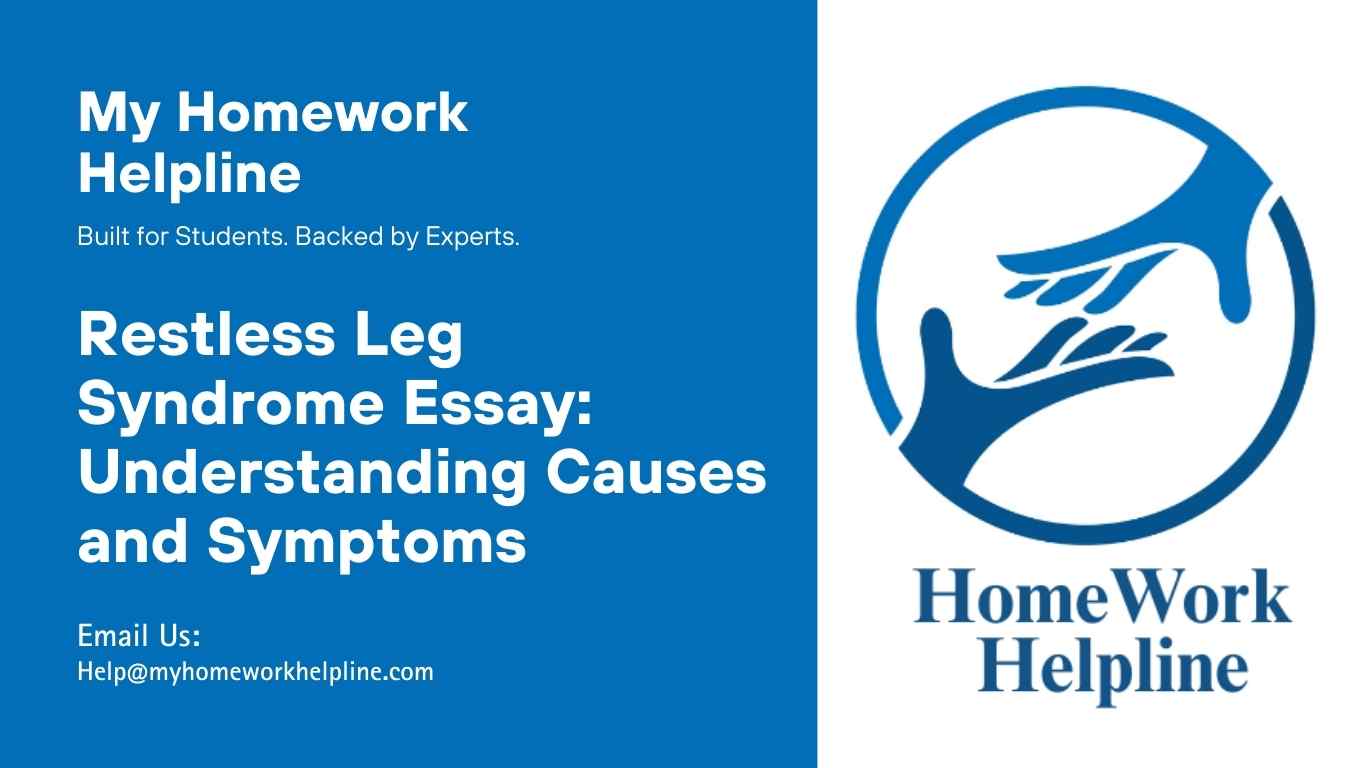Restless Leg Syndrome: Causes, Symptoms, and Treatment Essay
As a sensory-motor disease, restless legs syndrome (RLS) is characterized by an irresistible impulse to move one’s legs and is often accompanied by dysesthesias. Dysesthesias are described as unpleasant, unusual sensations that arise in the absence of any apparent sensory stimulus. It is yet unclear what causes RLS. It is thought that certain instances may be genetic. Diabetic, renal, and alcohol-related nerve injury in the legs has been associated with particular instances.
Need support with your neuroscience or psychology assignments? Our experts provide professional Restless Leg Syndrome essay assistance to help with research papers, essays, and homework. We guide students in structuring content, integrating evidence-based research, and formatting work according to academic standards. Get reliable assistance today and complete assignments with clarity, accuracy, and confidence.
Scientists have known for some time that RLS is linked to issues with the brain chemical dopamine, which is needed by brain cells to communicate and create smooth, purposeful muscle activity and movement. Research has uncovered risk-increasing genetic variations in four distinct areas of the human genome that contribute to RLS. In addition, RLS is linked to a wide variety of diseases, such as peripheral neuropathies, spinal cord lesions, and changes in brain metabolism (Trenkwalder & Paulus, 2010).
People with restless legs syndrome often feel an intense need to move their bodies when resting, sitting, or sleeping. One’s symptoms, past and family medical history, a complete physical examination, and the findings of diagnostic tests will all go into making a final diagnosis. One of the most telling symptoms is the need to be moving one’s legs constantly. At least three months should have passed since the onset of symptoms. Patients report “creeping, crawling tingling, tingling, tugging, or painful” sensations in the joints of their knees, ankles, or lower limbs (Guo et al., 2017). Sometimes even the phantom limbs might be implicated. The patient’s sleep is usually disrupted.
If one suffers from restless legs syndrome, their first line of defense should be to avoid anything that might worsen the condition, such as certain foods or chemicals. Nicotine, coffee, and alcohol are all examples. Moreover, it is essential to address any underlying health issues. Vitamin and mineral deficiencies may often be remedied with dietary supplements. Only persons with restless legs syndrome symptoms are often urged to take medication daily. Some examples include anticonvulsants, benzodiazepines, opiates, and dopamine agonists.
References
Guo, S., Huang, J., Jiang, H., Han, C., Li, J., Xu, X., … & Wang, T. (2017). Restless legs syndrome: from pathophysiology to clinical diagnosis and management. Frontiers in aging neuroscience, 9, 171.
Trenkwalder, C., & Paulus, W. (2010). Restless legs syndrome: pathophysiology, clinical presentation, and management. Nature Reviews Neurology, 6(6), 337-346.

